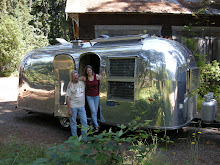
Nestled in the foothills of the Santa Catalina Mountains just outside of Tucson, Biosphere 2 rises from the desert like a gigantic diamond with thousands of jeweled facets gleaming in the sun. However all that glitters is not gold and Biosphere 2 is no exception. Plagued by controversy and labeled by many as a “failure”, this massive experiment has managed to prove that Biosphere 1, our planet, is an incredibly complex system, and that man’s puny efforts to replicate or control it often produce less than the desired result. We recently spent the day there and here is our report.
Funded by wealthy oilman Edward P. Bass, the initial project was designed to study how man might create artificial earthlike sanctuaries in space and on other planets, as well as to learn more about how our planet does what it does so seamlessly, flawlessly and seemingly effortlessly. What looks like a giant greenhouse, is in reality a complex set of systems designed to regulate the water, air and soil that was to be the key to the inhabitants survival. What they learned was that mother nature has spent billions of years, not millions of dollars to perfect her systems, and that there are so many pieces to the puzzle, that missing even the slightest detail like forgetting to seal the concrete which resulted in a gradual loss of oxygen, can be a disaster. But unlike Biosphere 2, where the occupants always had the option to open the doors and step back into Biosphere 1, we have no options when it comes to our survival.
As with any experiment, the outcome is not always certain, that is why you conduct it. So Biosphere 2 is considered by many, as living proof of how resilient life is on this planet, and yet how fragile, surviving only within a narrow band of environmental parameters. If, like the designers of Biosphere 2, we miss a few details about the impact of human activities on the ecosystems, the results may be, just like at Biosphere 2, the shutdown or collapse of those ecosystems.
When the first eight Biospherians were sealed inside the structure in 1991, the whole world was watching, and the problems began almost immediately. Food production was inadequate due in part to unusually cloudy skies caused by El Nino. Plastic used to reinforce the millions of cubic feet of glass reduced the UV radiation reaching the inhabitants resulting in vitamin deficiencies. Cockroaches, brought into the experiment as they were considered important for their ability to breakdown organic materials, began to overrun the place. And the people, both constantly under the microscope from the outside, yet hopelessly trapped with each other inside, began to breakdown as well. Yet remarkably, these eight people stuck it out, and for two years they worked and lived in this sealed goldfish bowl with no inputs from the outside world. The diminishing oxygen finally resulted in new oxygen having to be imported from the outside world, but in all other respects, they lived and breathed and ate and drank from the same materials, recycled endlessly, that they had entered with. When they left, they were all 25 lbs. lighter, their skin tone reflected the lack of natural sunlight, and while relatively healthy, they all looked like hell. I can only imagine the strength it took to tough it out.
By the time the second group of Biospherians entered the structure in 1994, many of the original environmental bugs had been worked out. However six months later the human factor would bring the entire mission crashing to an end, and Biosphere 2 would never again be operated as a sealed environmental test.
Today, time has taken its toll on the habitat within the structure. The various Biomes including the 850 square meter ocean complete with coral reef are in different states of health. The coral reefs, much like our own, have collapsed completely, and the science being conducted is now being changed to help us understand the effects that global warming may have on our ecosystems. The rain forest is slowly being dried out to replicate the effects of drought, and the CO2 levels in some of the other Biomes are being increased to study those effects as well. The University of Arizona now operates the project, and it appears they have saved it, at least in the short-term, from the destruction many thought would occur when a land developer who has plans for a resort hotel and housing development bought the property in 2007.
Stephen Hawking, the brilliant mathematician has said that the survival of the species may depend on our ability to leave this planet at some time in the future. I would argue that why should we waste our time and precious resources trying to find or create a new home on a distant or inhospitable planet, when we have a perfectly good one right here. Biosphere 2 has proved that it is not any easy job to steward a planet. We have a lot of work to do.
For more info and pictures, CLICK HERE to visit our website.










